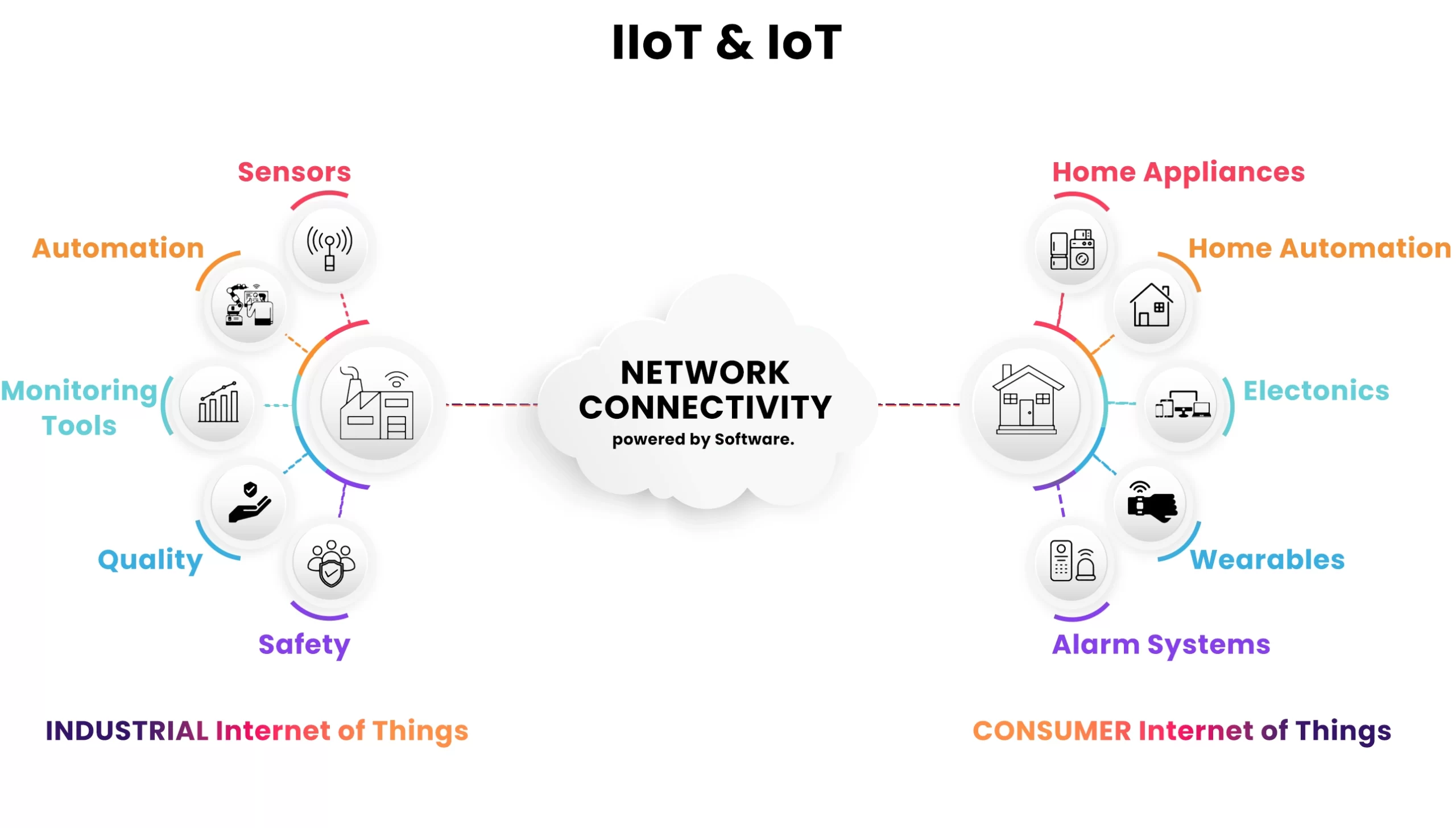Keeping pace with advancements in technology and how they impact our daily errands (both on an industrial scale and a domestic scale) is an ongoing quest. Any unnoticed developments can cost industrial a great deal, even though keeping abreast of technology is not an easy feat.
Internet and networking technologies combine to bring IoT products to homes and industries. Instead of diving into the similarities and differences between IoT and IIoT, it is of great importance to understand the basic concepts of both IoT and IIoT.
What are IoT and IIoT?

IoT is an abbreviated name for the Internet of Things. IoT refers to physical objects (“Things”) embedded with sensors, software and other processing technologies that permit these things to connect and transmit data with other devices and systems through the internet or a communication network.
IoT devices may include refrigerators, air conditioners and activity trackers. Take for instance a refrigerator – a smart refrigerator, that allows users to monitor various groceries inside the refrigerator in real-time from anywhere, thus enabling them to make necessary orders for the groceries missing in the refrigerator. Some smart refrigerators allow users to monitor the expiry dates on their groceries for safe and healthy food consumption.
The idea or concept of an interconnected web of “things” forms a foundation for IIoT. IIoT is an abbreviation for Industrial Internet of Things. It is a subcategory of IoT that refers to a unified interconnection system of sensors, machinery and other industrial equipment through the internet and/or business intelligence (BI). In simpler terms, IIoT is considered as the interconnection between people and industrial systems and machinery. It integrates industrial automation, business assets and predictive analytics in one place. The Industrial Internet of Things promotes universal data usage with the switch to data democratization which transforms the scenery of manufacturing industries. Data democratization enables plant operators to utilise data as an everyday tool.
Comparisons: Similarities and Differences
Before discussing the differences between the Internet of Things and the Industrial Internet of Things, let us go through some of the similarities first.
Similarities between IoT and IIoT
IoT and IIoT both share common concepts and technologies of smart equipment connectivity and cloud computing to establish a system (always online) that collects data to help users make informed decisions. Some of the few tangible similarities between IoT and IIoT include the following:
- They both necessitate a cloud computing framework.
- They both necessitate Machine Learning (ML) and Artificial Intelligence (AI) to ensure smart decision-making.
- They both utilise common input/output devices, for instance, sensors, cameras, microphones etc.
- Affordable and high-speed internet connection is an essential resource for both IoT and IIoT.
Differences between IoT and IIoT
Although there exists a handful of similarities between IoT and IIoT, they have a quite several distinctions. The following are some of the basic IoT and IIoT differences that can be considered.
| ATTRIBUTES | Industrial Internet of Things – IIoT | Internet of Thing – IoT |
| Focus Segment | Industrial applications. | Domestic/commercial applications. |
| Interest | Complex industrial processes optimization via smart devices. | Daily task automation through consumers devices. |
| Objective | Aimed at automating machinery to ensure safety, efficiency and sustainability. | Aimed at rendering convenience. Simply making the user’s life easy. |
| Connectivity | Both wired and wireless. | Usually wireless. |
| Cybersecurity | More advanced and robust cybersecurity protocols. | Generally less sophisticated cybersecurity protocols (utility-centric). |
| Interoperability | CPS-integrated – interoperations with new and legacy technologies like ERP, warehousing solution etc., and must operate reliably with these technologies. | Autonomous – devices usually operate individually, sometimes with one or two different devices. |
| Sensor Utilisation | Sophisticated sensors e.g., pressure sensors, torque sensors, speed sensors, radio-frequency identification (RFID) sensors etc. | Basic sensors e.g., motion sensors, temperature sensors, moisture sensors etc. |
| Precision & Accuracy | Precise and accurate enough to manage various synchronized industrial processes down to milliseconds. | Typically accurate enough to gather limited amount of data for a specific activity. |
| Data Quantity | High to very high. | Medium to high. |
| Programmability | Remote or on site programming. | Easier off-site programming. |
| Maintenance | Properly scheduled and planned. | Preference of the users. |